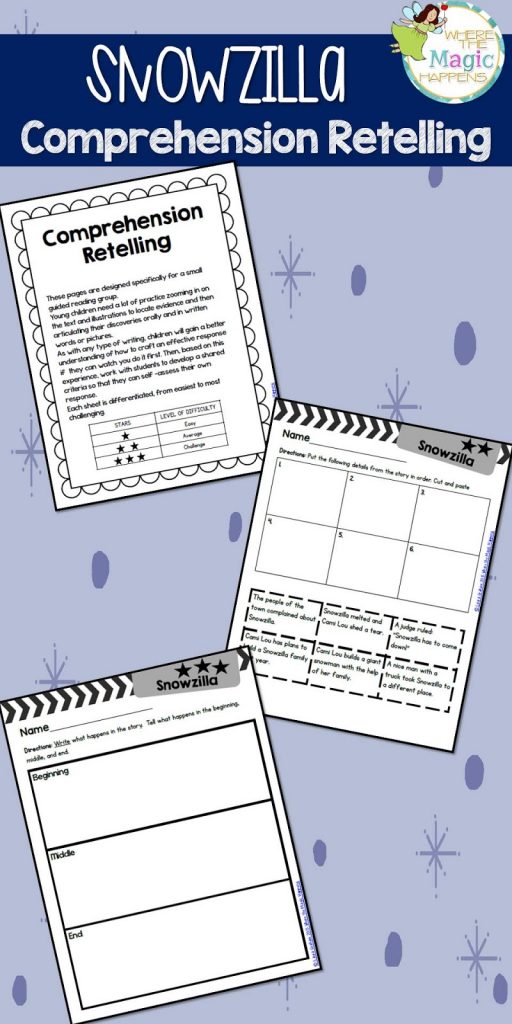Hi everyone!
I hope everyone is keeping warm and cozy during this crazy winter weather…
You know how our kids get all antsy when they can go outside and get some energy out?
If you know me, you know very well that I am always very intentional with every instructional activity that I design. However I always try to sneak in some fun because
having fun and learning at the same time is pretty awesome!
This is the story of a little girl who, with the help of her family, builds a gigantic snowman. The story goes on and on until the little girl has to blog, text, email… to save her Snowzilla. I love this story because our kids can connect to it. I also love how the community works together to achieve a goal.

This is a great activity that can be done in a small guided reading group before you introduce the book. It can also be done independently in a literacy center to review and practice new vocabulary learned.
In this activity, the students put the puzzles together in a pocket chart. After the puzzles are put together, the students complete one of the three sheets provided. Each sheet is differentiated, from easiest to most challenging.
Direct vocabulary instruction can be implemented using a research-based six-step process. {The Marzano Way!}
The six steps of the vocabulary instruction process are:
1.Provide a description, explanation, or example of the new term.
2.Ask students to restate the description, explanation, or example in their own words.
3.Ask students to construct a picture, symbol, or graphic representing the term or phrase.
4.Engage students in activities that help them add to their knowledge of the terms in their vocabulary notebooks.
5.Periodically ask students to discuss the terms with one another.
6.Involve students in games that allow them to play with terms.
The activities in this section are designed to review the concepts of verbs, nouns, and adjectives.
I like the idea of “zooming in” in the evidence to look for language patterns… when our students look at characters, key details, settings, etc., their comprehension of any text is greater.
These activities can be done in a small guided reading group or independently (if your students have the command and strategies to problem solve unknown words).
These pages are designed specifically for a small guided reading group.
Young children need a lot of practice zooming in on the text and illustrations to locate evidence and then articulating their discoveries orally and in written words or pictures.
As with any type of writing, children will gain a better understanding of how to craft an effective response if they can watch you do it first. Then, based on this experience, work with students to develop a shared criteria so that they can self –assess their own response.
Each sheet is differentiated, from easiest to most challenging.
 |
| Who doesn’t need some opinion writing to match standard W.1.1! |
And my most favorite activity: How to build a snowman.
Ingredients
3 cups of baking soda
½ cup of white (inexpensive) hair conditioner
This amount makes about 4 snowmen
Mix all ingredients in a big bowl, and voila!
Use googly eyes, a toothpick broken in half for the arms, whole cloves for the buttons, and strips of felt for the scarf.
After making Snowzilla, guide your students through the “how-to writing.” Your kids will love this activity, and your classroom will smell glorious!
Because I heart you all, I am posting the how-to writing for free here! Click on the picture to download. I hope you and your kiddos love this activity as much as we do in room 208!
Thank you for stopping by and happy winter!
Love and blessings,






Leave a Reply